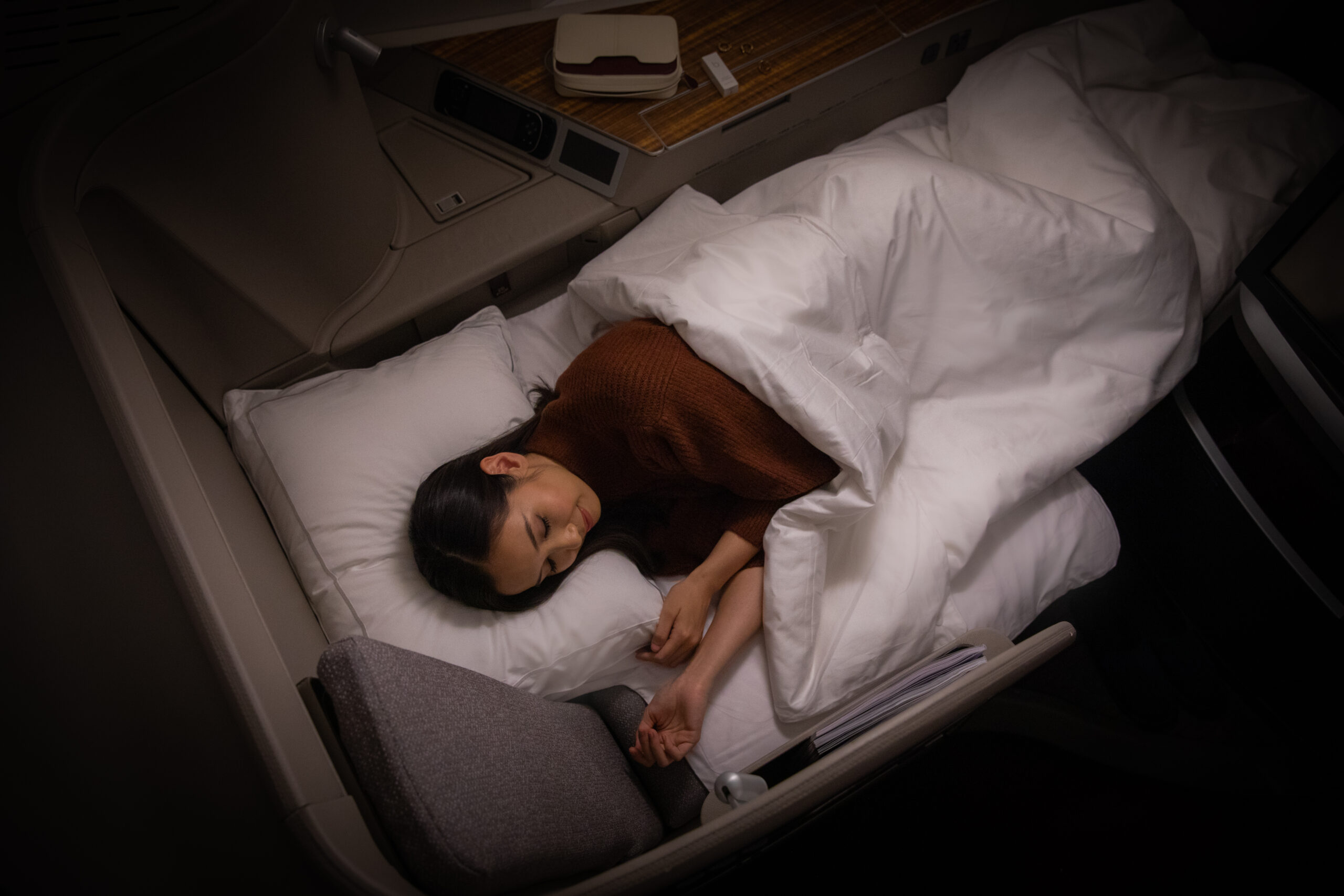Cathay Pacific has removed the requirement for their premium class passengers to wear a mask while on board some aircraft – a move that can be viewed as bold or relative to health guidelines, as offered by appropriate parties.
An internal memo, distributed among Cathay Pacific staff, discloses the situations in which passengers can remove their masks. One of the situations allowed is for First and Business Class flyers, these passengers can enjoy a mask-free experience when lying in a fully reclined position on a lie-flat seat.
When asked for additional details, Cathay Pacific told a Sam Chui Aviation and Travel writer that the partitions and distance available to First and Business Class passengers allows for adequate protection against COVID-19 while passengers are lying flat.
Additionally, Cathay Pacific highlights their use of high-efficiency particulate air (HEPA) filters on board their aircraft for cabin air circulation.
“Our aircraft are equipped with HEPA (High Efficiency Particulate Arresters) filtration systems; these are capable of filtering 99.999% of dust particles and airborne contaminates such as viruses and bacteria, ensuring the highest possible cabin air quality.”
Cathay Pacific
Since Cathay Pacific first introduced the mandatory application of a face mask in May 2020, the airline has only allowed passengers to remove their mask while consuming food and beverages or if social distancing can be maintained.
The move has caused some stir in the Cathay workforce, with a flight crew union voicing concern over the health and safety of their staff. The Standard cites Cheung Shu-wang, chairman of the Staff and Workers Union of Hong Kong Civil Airlines, states “under this instruction, many crew members are worried about infecting Covid-19 after the close contact with passengers”.
Cheung Shu-wang further adds that Cathay Pacific is doing this just to bring additional convenience to passengers.
On the other hand, the rollout of multiple vaccines, COVID-19 testing and more advanced contact tracing could mean this move comes at a time when the risk of contracting the virus is being mitigated.
Either way Cathay Pacific is fighting a years worth of COVID-19 downturn, on-top of the violent protests that rocked Hong Kong. Last year the airline flew just under 40,000 passengers, which shows a 98.7 percent reduction compared to 2019. Passenger load factor has also been drastically reduced, dropping from 85.5 percent to 18.4 percent.
Adding to the woes, Cathay was provided a $5 billion bailout, which saw the government take a non-controlling stake in the airline.
The move is one which is likely to draw in more passengers, using debatable convenience practices to make 2021 a better year operationally and financially. Depending on how it goes, we may see a response from other airlines introducing similar options onboard aircraft and potentially in lounges. Passengers may also be inclined to use up points or spend additional money on premium travel just to enjoy added comfort in the air.
What are your thoughts on this decision?




